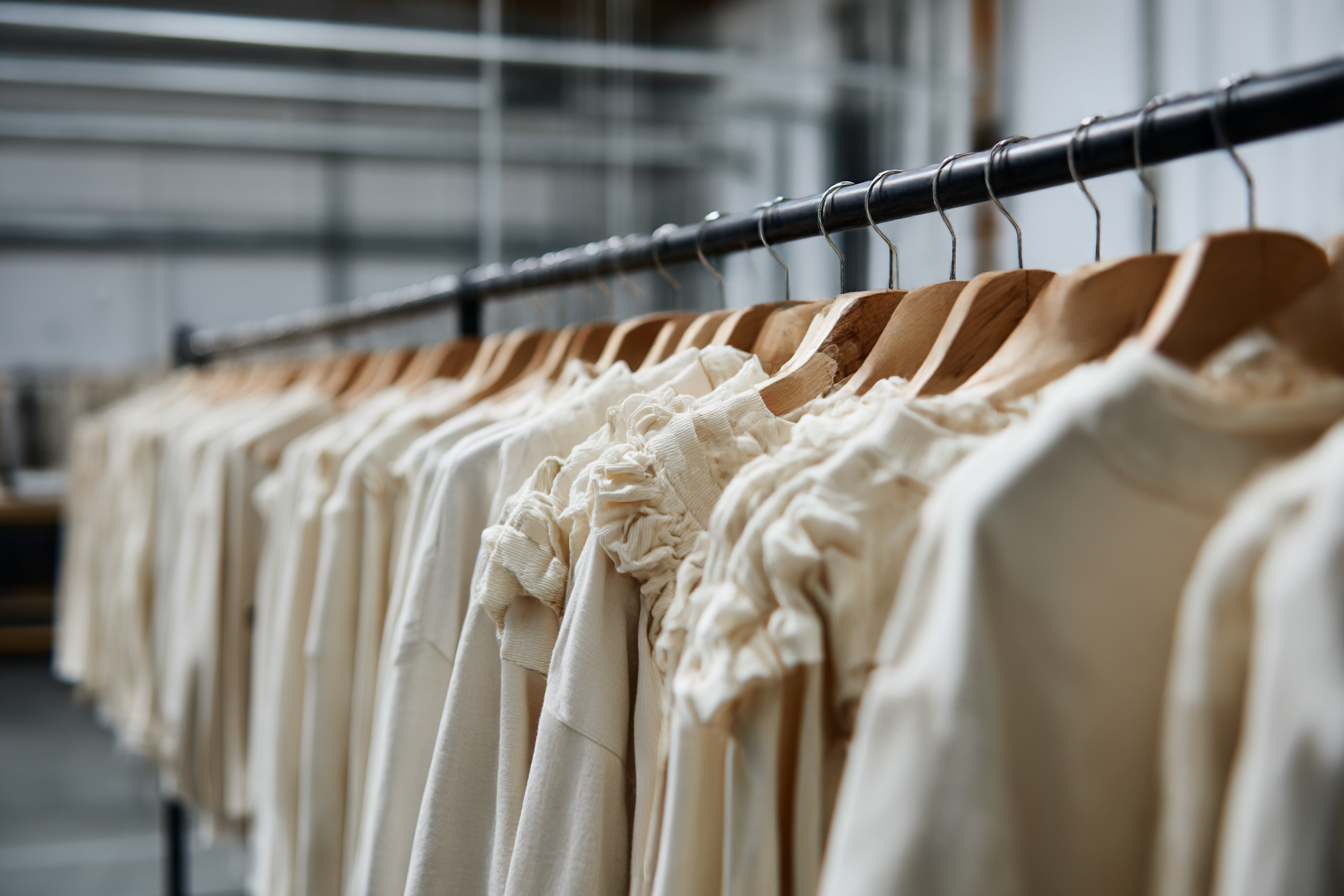Standing in my local charity shop last Tuesday, I watched a volunteer sort through yet another bin bag of barely-worn clothes donated by someone clearing out their wardrobe. “We get about fifty bags like this every week,” she told me, shaking her head as she held up a polyester dress with the tags still attached. “Most of it’s only been worn once or twice, if at all.” That’s when it really hit me—this isn’t just about individual shopping habits anymore. This is about fast fashion creating an urban waste management crisis that our cities simply weren’t designed to handle.

Fashion used to be a reflection of who we are, laden with culture and history. But somewhere along the line, it became this frantic race for newness—affordable clothes in endless styles, constantly rotating through stores and our wardrobes. What looks like harmless retail therapy on the surface is actually creating a massive environmental threat that’s overwhelming urban waste systems across the globe.
The numbers behind fast fashion’s waste impact are genuinely staggering. Every second, a garbage truck’s worth of textiles gets thrown away globally. In the UK alone, we discard about 350,000 tonnes of clothing annually. To put that in perspective, it’s like throwing away the collective weight of the Eiffel Tower into landfills every few weeks. And this isn’t just any waste—much of it consists of synthetic materials that won’t biodegrade for decades, potentially centuries.
I’ve been tracking my own clothing consumption for the past year, and the results were honestly embarrassing. Despite considering myself environmentally conscious, I’d accumulated 23 items I’d worn fewer than five times each. Most were impulse purchases—that “perfect” top I bought for a specific event, a pair of trousers that looked great online but never quite fit right, a jacket that seemed essential until I got it home and realized I already owned three similar ones.
The fast fashion business model is brilliantly engineered to encourage exactly this kind of consumption. Instead of traditional seasonal collections, brands now release new styles weekly, sometimes daily. This creates artificial urgency—buy it now or miss out forever. The clothes are priced low enough that purchasing feels almost consequence-free, but they’re also made cheaply enough that they fall apart or go out of style quickly, creating a constant need for replacement.
What really shocked me was learning about the lifecycle of these garments. The manufacturing process alone is incredibly resource-intensive—it takes about 2,700 liters of water to make a single cotton t-shirt, roughly what one person drinks in two and a half years. When you multiply that by the billions of garments produced annually, the resource drain becomes almost incomprehensible.
The environmental impact doesn’t stop at production. Getting those clothes from factories (usually in Asia) to stores worldwide generates massive carbon emissions from transportation. Then there’s the packaging—plastic bags, tags, hangers, and more plastic bags for individual purchases. Each step adds layers of waste to an already problematic system.
But it’s what happens after we’re done with these clothes that creates the real urban crisis. Unlike organic materials that break down naturally, synthetic fabrics like polyester essentially become permanent additions to our landfills. That cheap polyester dress from a fast fashion retailer could still be sitting in a landfill 200 years from now, slowly releasing microplastics and chemicals into soil and groundwater.
Cities worldwide are struggling to cope with textile waste volumes. In New York, textiles make up about 5% of all municipal solid waste, but unlike food scraps or paper, most of it can’t be processed through standard recycling systems. London faces similar challenges, with textile waste putting increasing pressure on already strained waste management infrastructure.
I visited a textile recycling facility outside Manchester last month, hoping to understand potential solutions. What I found was both inspiring and sobering. The technology exists to break down and recycle many fabrics, but the reality is far more complex. Fast fashion garments often contain multiple fiber types—cotton mixed with polyester, for example—which are extremely difficult and expensive to separate for recycling.
The facility manager, Sarah, walked me through their process. “We can handle natural fibers reasonably well,” she explained, holding up samples of recycled cotton. “But when you get synthetic blends, especially the really cheap stuff from fast fashion, it’s often not worth the energy cost to process them. The quality is so poor that even if we could separate the fibers, they wouldn’t make decent recycled materials.”
This quality issue is fundamental to understanding why fast fashion waste is so problematic. These clothes aren’t designed to last—they’re engineered to look good briefly and cheaply. When they inevitably fall apart or go out of style, they can’t be effectively repurposed or recycled. They become what the industry euphemistically calls “end-of-life” waste, which usually means landfill or incineration.
The scale of this problem becomes clear when you look at specific cities. In Los Angeles, textile waste increased by 60% between 2015 and 2020, largely attributed to fast fashion consumption. The city’s waste management department had to create separate protocols for handling the surge, including partnerships with textile recyclers and increased public education campaigns about clothing disposal.
But even well-intentioned disposal can be problematic. I learned this firsthand when I decided to donate a bag of clothes I rarely wore. The charity shop volunteer was brutally honest: “About 70% of what we receive ends up in textile recycling, which often means it gets shipped to developing countries. A lot of that eventually ends up in their landfills instead of ours.”
This global dumping of textile waste is another hidden consequence of fast fashion. Countries in Africa and South America receive millions of tonnes of secondhand clothing exports annually, much of it poor-quality fast fashion that local markets can’t absorb. These clothes often end up in massive open-air dumps, creating environmental problems far from the cities where they were originally purchased.
The social justice implications are impossible to ignore. The same system that creates cheap clothes for wealthy consumers often exploits workers in developing countries through poor wages and dangerous working conditions. The 2013 Rana Plaza factory collapse in Bangladesh, which killed over 1,100 garment workers, highlighted the human cost of our demand for cheap, fast fashion.
What makes this particularly frustrating is that alternative approaches exist and are growing. Sustainable fashion brands are proving that it’s possible to create beautiful, durable clothing through ethical production methods. Brands like Patagonia have built entire business models around making clothes that last and offering repair services to extend garment lifecycles.
I’ve also discovered the growing slow fashion movement, which emphasizes quality over quantity. Last summer, I visited a small boutique specializing in locally-made clothing. The owner, Maria, told me stories about each piece—who made it, where the materials came from, how long it took to create. The prices were higher than fast fashion, but when you calculate cost-per-wear over the item’s expected lifetime, they actually represented better value.
Consumer education is crucial for addressing this crisis. Many people simply don’t understand the environmental impact of their clothing choices. The impact of fast fashion extends far beyond individual wardrobes to affect entire urban ecosystems through waste management challenges, resource consumption, and pollution.
Cities are beginning to respond with policy interventions. France has banned the destruction of unsold clothing and requires fashion brands to take responsibility for their products’ end-of-life management. Some US cities are implementing textile collection programs and exploring extended producer responsibility laws that would make manufacturers financially responsible for their products’ disposal costs.
Technology offers some promising solutions. I recently learned about a facility in Sweden that can break down cotton-polyester blends and recycle them into new fabrics. While still expensive and energy-intensive, these technologies could become more viable as volumes increase and costs decrease. Innovations in bio-based materials could also reduce reliance on synthetic fibers that create long-term waste problems.
Community-level initiatives are making a difference too. Clothing swaps, repair cafes, and upcycling workshops are popping up in cities worldwide. I attended a neighborhood clothing swap last month and was amazed by the variety and quality of items people brought. It felt like shopping, but without the environmental guilt or financial cost.
DIY projects for sustainable homes can include creative ways to repurpose old clothing into home goods. I’ve learned to turn worn-out t-shirts into cleaning rags, old jeans into insulation for garden planters, and damaged sweaters into pillow covers. It’s not a complete solution, but it does extend the useful life of materials before they enter the waste stream.
Individual actions matter, but systematic change requires collective effort. We need to support brands that prioritize durability and ethical production, even if it means buying fewer items overall. We need to advocate for better textile recycling infrastructure and policies that hold producers accountable for their products’ full lifecycle impacts.
The rental and sharing economy offers another promising direction. Companies like Rent the Runway have proven that consumers will embrace access over ownership for special occasion clothing. Similar models are emerging for everyday wear, particularly in urban areas where space constraints make large wardrobes impractical anyway.
Exploring second-hand markets has become one of my favorite ways to find unique pieces while reducing environmental impact. Vintage and consignment shops often carry higher-quality items than current fast fashion offerings, and each purchase keeps clothing in circulation longer rather than adding to waste streams.
The circular economy principles that work for other industries can apply to fashion too. Instead of the linear “make-use-dispose” model, circular fashion emphasizes designing for durability, repairability, and recyclability. Understanding the circular economy provides frameworks for thinking about these systemic changes.
What gives me hope is seeing how quickly attitudes can change when people understand the real impacts of their choices. My friend Emma used to be a serious fast fashion consumer—multiple shopping trips per month, constantly buying new trends. After watching a documentary about garment workers’ conditions, she completely transformed her approach. She now buys maybe five new items per year, all from brands she’s researched thoroughly for ethical practices.
The urban waste crisis created by fast fashion is serious, but it’s not insurmountable. It requires acknowledging that our current consumption patterns are unsustainable and committing to different approaches—buying less but better, caring for what we own, supporting circular business models, and advocating for policy changes that address root causes rather than just symptoms.
Every time we choose to repair rather than replace, buy secondhand rather than new, or simply make do with what we already own, we’re chipping away at this massive waste problem. Cities are beginning to adapt their infrastructure and policies to handle textile waste more effectively, but the real solution lies in dramatically reducing the volume of waste we create in the first place.
The fast fashion industry has convinced us that constant newness is essential for happiness and self-expression. But walking through that charity shop, seeing bin bag after bin bag of barely-worn clothes, I’m reminded that true style isn’t about having the latest trends—it’s about making thoughtful choices that reflect our values and respect the resources that went into creating our clothes. Our cities, our planet, and our consciences will thank us for it.







